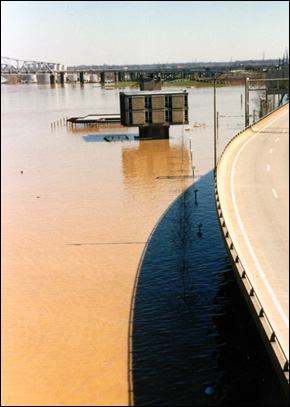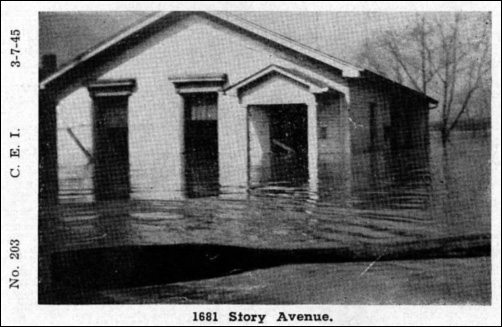Copious amounts of rain fell on central Kentucky and extreme southern Indiana as the calendar turned from February to March back in 1997. As thunderstorms and large areas of heavy rain repeatedly moved over the same areas, impressive amounts of rainfall were recorded. The deluge resulted in record flooding along smaller streams and some of the worst flooding along the Ohio River since at least 1964, and in some places since the Great Flood of 1937. A few smaller streams set their all-time records.
Water reached the rooftops in Boston (Nelson County). Barge traffic was halted on the Ohio River when the locks flooded. In the Louisville metro area about $200,000,000 in damage was attributed to the flooding, with 50,000 dwellings affected. Interstates 64 and 65 were closed. Ninety-two counties in Kentucky and 14 counties in southern Indiana were declared disaster areas. Tens of thousands of people were evacuated from their homes, with total damage across the region around $400,000,000. Nineteen deaths occurred in Kentucky; 9 were people who attempted to cross flooded roadways.
Navigation on the Ohio River stopped completely due to the locks being flooded. Due to backwater from the Ohio River the flooding was very prolonged. In the Licking River basin, flooding continued until the 7th, Kentucky River basin the 8th, Salt River basin until the 11th, and the Green River basin until the 18th. The middle of the Ohio River stayed above flood stage until the 16th.

The Louisville waterfront from the Clark Memorial Bridge

View from the Waterfront Development office building

This picture was taken at Pinckard Baptist Church just south of Versailles, Kentucky along KY 169 at Clear Creek. The flooded creek in the picture is normally just a few feet wide and less than a foot deep.
Learn More:








